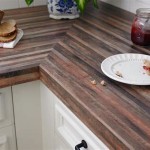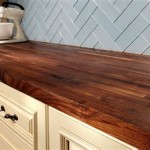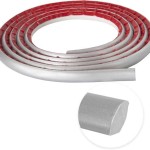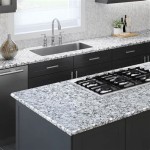Best Crushed Ice Maker Countertop: A Detailed Guide
Crushed ice is a versatile and popular ingredient for a wide variety of uses, ranging from beverages and cocktails to food presentations and therapeutic applications. While ice can be crushed manually, the process is often time-consuming and inconsistent. A dedicated crushed ice maker designed for countertop use provides a convenient and efficient solution for producing high-quality crushed ice on demand. This article will explore the key features, benefits, and considerations when selecting the best crushed ice maker for your needs.
Understanding the Appeal of Crushed Ice
Crushed ice differs significantly from cubed ice. Its smaller particle size allows for rapid cooling, making it ideal for chilling drinks quickly without excessive dilution. The texture of crushed ice is also particularly appealing in certain beverages, such as mint juleps, margaritas, and shaved ice desserts. Beyond beverages, crushed ice finds application in displaying seafood, maintaining the freshness of produce, and even providing therapeutic cold packs for injuries.
The appeal of crushed ice is also rooted in its aesthetic qualities. It presents a visually appealing texture that elevates the presentation of drinks and food items. This visual appeal is particularly significant in commercial settings like bars and restaurants where presentation is a key factor in customer satisfaction.
Key Features to Consider in a Crushed Ice Maker
Choosing the right crushed ice maker involves careful consideration of several key features that impact its performance, convenience, and suitability for specific needs.
Ice Production Capacity and Speed
The ice production capacity of a crushed ice maker is typically measured in pounds of ice produced per day. This specification is crucial for determining if the machine can meet the demand for crushed ice. Small households might only require a machine capable of producing 20-30 pounds of ice per day, while commercial establishments would need significantly larger capacities. The speed at which the machine produces ice cycles is also important. A faster cycle time translates to quicker availability of crushed ice, especially during peak demand periods.
A machine's bin capacity is another factor to consider alongside daily production. A larger bin allows for storing a greater quantity of crushed ice, reducing the need for frequent emptying. However, a larger bin also increases the overall footprint of the machine, which may be a limitation for countertop models.
Ice Texture and Consistency
The texture of the crushed ice produced by different machines can vary considerably. Some models produce fine, snow-like ice, while others create coarser, chunkier ice. The optimal texture depends on the intended use. For example, fine ice is preferable for shaved ice desserts, while coarser ice might be better suited for cocktails. Evaluate the machine’s specifications and reviews to understand the type of crushed ice it produces.
Consistent ice texture is also a key consideration. A high-quality crushed ice maker should produce ice with uniform particle size, ensuring consistent cooling and presentation. Inconsistent ice texture can result in uneven cooling and detract from the overall aesthetic appeal.
Convenience and Ease of Use
Countertop ice makers are designed for convenience, and their ease of use is a critical factor. Look for models with intuitive controls, clear displays, and user-friendly operation. A simple interface minimizes the learning curve and allows for quick and easy ice production.
Automatic shut-off features are also important. These features automatically stop ice production when the ice bin is full or the water reservoir is empty, preventing overflowing and potential damage to the machine. A self-cleaning function can significantly simplify maintenance and ensure optimal hygiene.
Durability and Reliability
The durability and reliability of a crushed ice maker are essential for long-term performance and minimizing maintenance costs. Look for models constructed with high-quality materials, such as stainless steel, which are resistant to corrosion and wear. Check reviews and ratings to assess the machine’s reliability and longevity.
The ice-making mechanism itself should be robust and designed to withstand repeated use. A powerful motor and durable crushing blades are crucial for efficient and consistent ice production. Consider the warranty offered by the manufacturer as an indicator of their confidence in the product's durability.
Water Source and Filtration
Countertop crushed ice makers typically use either a direct water line connection or a refillable water reservoir. Direct water line connections offer a continuous water supply, eliminating the need for manual refilling. However, they require professional installation and may not be suitable for all locations.
Models with refillable water reservoirs are more portable and easier to set up. However, they require regular refilling, which can be inconvenient, especially during periods of high ice demand. Consider the capacity of the water reservoir and how frequently it needs to be refilled based on your usage patterns.
Water filtration is an important feature to consider, regardless of the water source. A built-in water filter removes impurities and contaminants from the water, resulting in cleaner, clearer ice. Filtered water also helps to prolong the lifespan of the ice maker by preventing mineral buildup and corrosion.
Noise Level
The noise level of a crushed ice maker can be a significant consideration, especially in residential settings or noise-sensitive environments. Some models can be quite noisy during operation, which can be disruptive. Look for models that are advertised as quiet or have a low decibel rating. Reading customer reviews can provide valuable insights into the actual noise level of the machine.
Specific Applications and Considerations
The specific application for which the crushed ice maker will be used influences the choice of model. A home user may prioritize convenience and ease of use, while a commercial establishment may focus on production capacity and durability.
Home Use
For home use, a countertop crushed ice maker provides a convenient way to enjoy chilled beverages and create refreshing desserts. Consider a model with a compact footprint that fits comfortably on the countertop. Ease of use and a self-cleaning function are also important considerations for home users.
Noise level is particularly important in residential settings. Look for a quiet model that won't disrupt daily activities. A model with a smaller ice bin may be sufficient for home use, as the demand for crushed ice is typically lower than in commercial settings.
Commercial Use
Commercial establishments, such as bars, restaurants, and cafes, require crushed ice makers with significantly higher production capacity and durability. Look for models constructed with robust materials and designed for continuous operation.
A direct water line connection is often preferred for commercial use, as it eliminates the need for manual refilling. Consider a model with a large ice bin to minimize the frequency of emptying. Sanitation and ease of cleaning are also critical considerations in commercial settings.
Medical and Therapeutic Uses
Crushed ice is frequently used for therapeutic purposes, such as treating injuries and reducing inflammation. For these applications, the texture of the ice is particularly important. Fine, snow-like ice is often preferred, as it conforms to the body and provides maximum contact.
Consider a model with precise control over the ice texture and consistency. Sanitation is also crucial when using crushed ice for medical purposes. Look for a model with a self-cleaning function and the ability to use filtered or distilled water.
Maintenance and Care
Proper maintenance and care are essential for prolonging the lifespan of a crushed ice maker and ensuring optimal performance. Regular cleaning is crucial for preventing mineral buildup, mold growth, and other issues that can affect ice quality and machine efficiency.
Follow the manufacturer’s instructions for cleaning and descaling. Some models have a self-cleaning function that simplifies the process. Regularly inspect the water filter and replace it as needed. Avoid using abrasive cleaners or harsh chemicals that can damage the machine’s components.
Empty the ice bin regularly to prevent ice from clumping together and becoming difficult to remove. If the machine is not used frequently, drain the water reservoir to prevent stagnant water and potential bacterial growth. Store the machine in a cool, dry place when not in use.
Conclusion (Omitted as per Instructions)

The 7 Best Nugget Ice Makers In 2025 Sonic Maker Reviews

The 4 Best Countertop Ice Makers Of 2025 Reviews By Wirecutter

The 4 Best Countertop Ice Makers Of 2025 Reviews By Wirecutter

The Best Countertop Ice Maker 2025 For Fancy Cocktails And Chilled Drinks Bon Appétit

The 4 Best Countertop Ice Makers Of 2025 Reviews By Wirecutter

The 4 Best Countertop Ice Makers Of 2025 Reviews By Wirecutter

The Best Ice Makers

The 4 Best Countertop Ice Makers Of 2025 Reviews By Wirecutter

Compact Stainless Steel Ice Maker 30 Lb Capacity Singapore U

6 Best Countertop Ice Makers 2025 Reviewed Food Network








